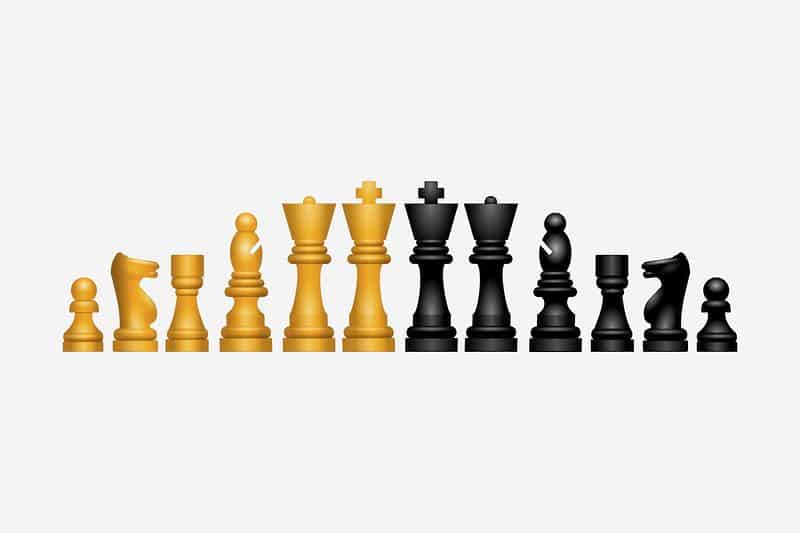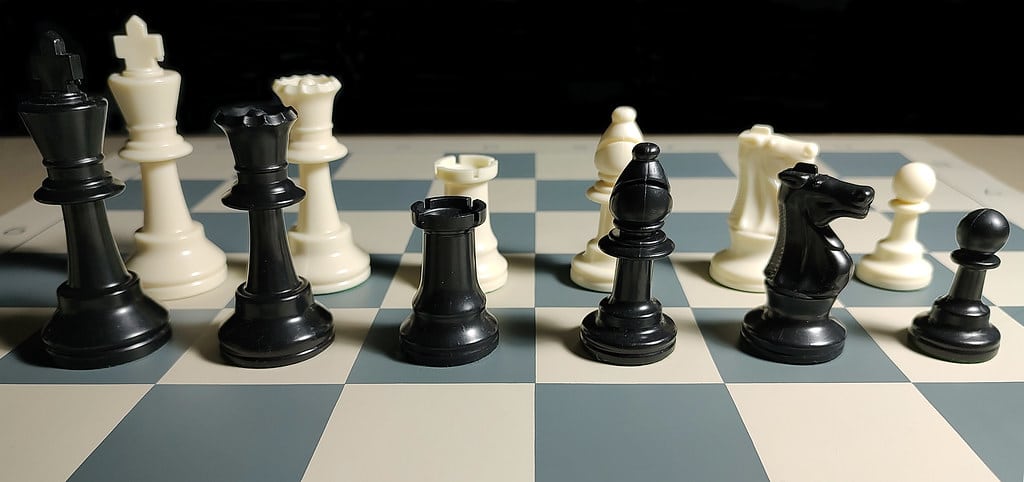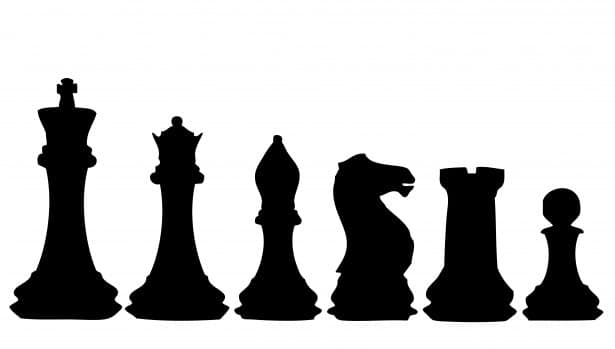Chess is a classic game that has been around for centuries, beloved by players around the world. In order to play chess, you need the right set of pieces.
Table of Contents
Guide to Chess pieces
Each type of chess piece has its own movement and purpose on the board. Understanding the different chess pieces and how to move them is essential for any beginner. Here’s a quick guide to the different types of chess pieces:
- Pawns
- Knights
- Bishops
- Rooks
- Queens
- Kings
We’ll go over the movement and special abilities of each chess piece to give you a better understanding of the game.
Chess pieces are placed on the board according to a set of rules. Each piece has its own movements and restrictions. The pieces are divided into two colors, white and black. The most important pieces are the King and Queen, followed by the Rook, Bishop and Knight. The Pawn is the least powerful piece. Each piece has a different value, with the King being the most valuable. The pieces move in different directions and can capture opponent pieces by jumping over them. The goal of the game is to checkmate the opponent's King.
The board is composed of sixty-four squares, with alternating colors of white and black. The pieces are placed on the board according to a set pattern at the beginning of the game. Diagonally opposite corners are occupied by the same color pieces. The King and Queen are placed on the same color squares, with the rooks placed on the corners. The bishops are placed next to the rooks, and the knights are placed next to the bishops. The pawns are placed in front of all the other pieces.

What are the 16 chess pieces called?
Chess is a two-player strategy board game from the 15th century. It is played on a checkered board with 64 squares and 16 pieces for each player. The pieces are divided into two types: Pawns and Major Pieces. The Major Pieces are the King, Queen, Rook, Bishop, and Knight.
The King is the most important piece, and it can only move one square at a time. The Queen is the most powerful piece, able to move in any direction and any number of squares. The Rook can move in any direction, but only in straight lines. The Bishop can move in diagonal lines, and the Knight can move in a “L”-shape. The Pawns are the weakest pieces and can only move forward one square at a time, but can take pieces diagonally.
The 16 chess pieces are called: King, Queen, Rook, Bishop, Knight, and Pawns. They are all differentiated by their movement and capabilities on the board, and are essential for a successful game of chess.

What are the pieces in chess called?
Chess is a two-player board game which has been around for centuries. Each player has 16 pieces which are used to capture the opponent's pieces and ultimately checkmate the king. The pieces in chess are called:
- Pawns: the most numerous pieces, they can only move forward and capture diagonally
- Rooks: shaped like a castle and can move horizontally and vertically
- Knights: shaped like a horse, they can move in an L-shape
- Bishops: shaped like a hat, they can only move diagonally
- Queen: the most powerful piece, she can move in any direction
- King: the most important piece, he can only move one square at a time
The rules of chess are simple: the goal is to checkmate the opponent's king by trapping it with your pieces or by making it impossible for it to move. Understanding the pieces and how they move is the first step to becoming a chess master!
What do the six different chess pieces represent?
Chess is a classic two-player strategy game that has been around for centuries. The goal of the game is to checkmate the opponent's king. Each player has 16 pieces made up of six different chess pieces that represent various characters and forces in battle.
The six chess pieces are the king, the queen, the bishop, the knight, the rook, and the pawn. The king is the most important piece and represents the leader of the army. The queen is the second most powerful piece and is typically represented by a female symbolizing a queen or other high-ranking female figure. The bishop is represented by a church official and can move diagonally across the board. The knight is represented by a horse and moves in an L-shape. The rook is represented by a castle and can move in straight lines. Finally, the pawn is the weakest piece and is typically represented by a foot soldier.
Chess is a game of strategy, deception, and careful decision-making. Understanding the power of each piece, as well as how they interact with each other, is key to becoming a successful chess player.
What is the most powerful piece in a chess pieces?
The most powerful piece in a chess game is the Queen. She is the only piece that can move in any direction, horizontally, vertically and diagonally. Her movement is unlimited and her power is greater than any other piece. She can put any of the other pieces in check and can also capture them if they are unprotected. The Queen can also be used as a shield or a wall for the King, since she can move in any direction and can block the other pieces from attacking the King.
The Queen is the strongest piece on the chessboard and her power should not be underestimated. She can control the entire board, moving to any square and attacking any piece. She also has the ability to aid other pieces in their movement, allowing them to move two squares instead of one. The Queen is also the most valuable piece on the board, and her loss can often be a major blow to a player's chances of winning the game.
Other important pieces in chess are the Rook, Bishop and Knight. The Rook is able to move horizontally and vertically and can take other pieces if they are unprotected. The Bishop can move diagonally and is able to control important areas of the board. The Knight has a unique movement that can jump over other pieces, allowing it to make unexpected moves. Although these pieces are powerful in their own right, none of them can match the Queen in terms of power and versatility.
Chess pieces have been around for centuries and continue to captivate people around the world.
Each piece has a unique set of moves and capabilities, making it a great strategy game.
Having a strong understanding of the pieces and their moves will help you play a better game.
You should take time to learn the different pieces and their abilities.
Become familiar with the board, the pieces, and the rules of the game.
You'll be able to play the game confidently and with skill. In conclusion, chess pieces are fascinating and complex. Understanding them will help you develop your skills and become a better player. It's a great way to challenge and exercise your mind. Chess is a game that will captivate you for a lifetime and if you want to learn how to play chess, you are goin in the positive direction.






